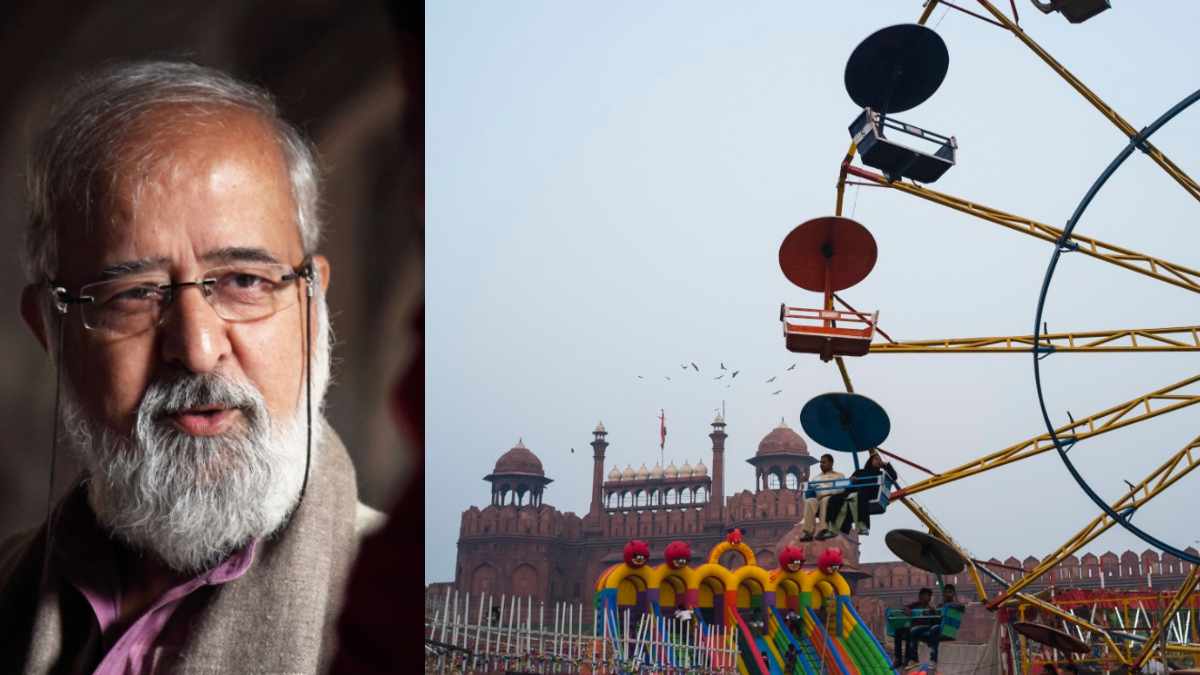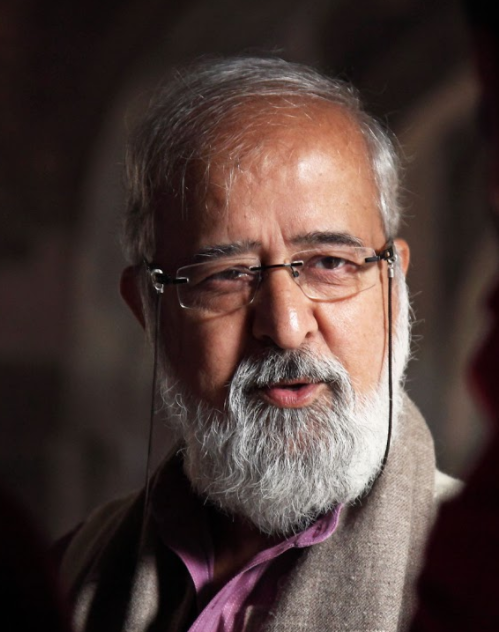
Q: Old Delhi has witnessed several chapters in the history of the region. How are these shifts between regimes and eras still visible in its architecture?
A: The construction to build a new capital was started on the site, now known as Old Delhi, but originally named Shahjahanabad, by Shahjahan in 1639. The Mughals ruled from here till 1857, but the later Mughals lost much of their power and the city was overrun by Pathans, Jats, Sikhs and Marathas. The Marathas had control of the city till 1803 when they were defeated and replaced by the British. The Sikh General Bagel Singh who had control of the city for a while is reputed to have built all the major gurdwaras of Delhi. All we have as evidence of the presence of the Marathas is the Gauri Shankar Mandir in Chandni Chowk, built by Appa Gangadhar Rao in the second half of the 18th century. Traces of the presence of the Marathas are also to be seen in many localities around Shahjahanabad like Chawri, Jogiwara, Maliwara, Bada Hindu Rao, etc. The architectural elements that have survived the relentless march of steel, glass and cement/concrete structures are cusped arches that evolved during the reign of Shahjahan, and the beautifully carved pillars in many old buildings, including old temples, in Chehkpuri and Nau Ghara in Kinari Bazar.

To these architectural elements were added Corinthian pillars, foyers and stately facades, most clearly visible at the St James Church at Kashmere Gate, the Baptist Church, Begum Samru’s Haveli and the Imperial Bank (now the State Bank of India) and the Town Hall Building in Chandni Chowk. A fine example of Gothic architecture is to be found at the St Stephen’s Church on Church Mission Road near Khari Baoli. The use of GothicRenaissance and later forms from the British Isles in church architecture is to be expected but these elements percolated down to other secular structures as well and so peaked-roof frontages supported on cast-iron pillars as in the Kashmere Gate area, corrugated sheet awnings held up by steel rods, fixed to carved wooden pillars in Chawri, Kashmere Gate and elsewhere or the presence of Portuguese and Spanish architectural elements like blinds made with wooden slats and painted green or brickwork railings atop the Ivory Palace opposite Jama Masjid North Gate, wrought or cast iron railings in balconies and typically late-Gothic or early brickwork visible in the Peyare Lal building in Chandni Chowk as well as typically European style carvings of human figures (nymphs, cherubs), bay windows as seen in Kucha Patiram, are some of the other elements that appeared with the British and the Europeans. Two other elements that found interesting uses were large Belgian mirrors fixed in very heavy wooden frames and glazed tiles with pictorial motifs.

Q. The renovation of Chandni Chowk has been done by keeping Mughal architecture in mind to give it a Mughal-era feel. Do such measures help in sustaining the architectural history and identity of Old Delhi or are they gimmicky and responsible for a certain stereotyping of the place?
A: There is, in effect no renovation in Chandni Chowk. All that is being done is to pedestrianise Chandni Chowk, shift overhead wires and other cables underground, plant trees, place sandstone bollards and sandstone planters on the central verge, in order to convert the main bazaar road into a promenade. There is nothing in this venture that has anything in common with what this market looked like in the Mughal design of this market or how it appeared even 100 years ago. There is no intervention to stop old structures being covered with false glass and metal facades. In any case, Chandni Chowk has very little, if any, traces of Mughal architecture left. All that can be retrieved if encroachments are removed will be the look of Chandni Chowk in the late 19th or early 20th century. But there is no effort towards achieving even that ambience. It is, in fact, a rather gimmicky window dressing. This whole redesigning of the road will boil down finally to pedestrianisation of the main street and make it only more tourist-friendly.
Q: Despite refurbished properties like havelis turned to luxury hotels, there is detachment that still exists. How can the heritage buildings of Old Delhi play a more active role and stay alive in the popular imagination, or be seen as valuable besides being turned to ticketed tourist spots?
A: Honestly speaking, these refurbished properties are neither here nor there. If you are restoring an old building, you have to be true to what buildings looked like in those days. We did not have exposed brick structures, so you can’t peel off plaster to make it look old and trendy, and if the floor was paved with uneven blocks of Delhi quartz or was made with packed earth, you cannot replace it with a marble floor. If there were wooden railings, you cannot replace them with tacky brass things that you pick up off the street. The detachment exists because the seasoned heritage enthusiast can sense the sleight of hand operation. Heritage buildings have to be turned into living structures, into places where people come to experience the way people lived in these places, three or two or a hundred years ago. Serious academic research is needed to recreate that ambience. There is no need to reinvent the wheel, but there is a need to learn from other heritage cities. There is a community that keeps donkeys and they are used to remove rubble and carry in construction material into the narrow lanes. If you were staying at a boutique hotel or a B&B in a heritage city that does not allow motorised traffic, the donkeys will carry your stuff once you get off the cab outside the heritage city, just as they do in the heart of Old Bukhara.
Q: How heritage structures in a place like Old Delhi should ideally be preserved?
A: What needs to be done, if one is serious about preserving the heritage of Shahjahanabad, is to preserve all of Shahjahanabad as part of world heritage, like world heritage cities like Khiva, Basra, Fez, Marrakesh and scores of others in every continent. Shahjahanabad is not one or two or twenty structures to be preserved. It is a city that has a history that goes back 370 years and also has a few structures that go back 650 years or so. What we need to do is to remove all the wholesale trade that has no business inside this heritage area, we need to remove all the new encroachments and constructions, take all the electric wires and services underground and then make the city liveable for its citizens who could simultaneously be trained to revive the crafts, arts, food of the city, to run small restaurants, conduct all kinds of heritage walks, hotels, B&B setups, run workshops, maintain museums, operate ticketed shows and do a million things that are done by those who live and work in heritage cities all over the world.
Q: Do you have a favourite building or structure in Shahjahanabad?
A: The Red Fort, despite 80% of its buildings having been demolished after the British took over the Fort and despite shoddy interventions by those who have little or no knowledge of history or the science and art of conservation, it continues to be a favourite. And so does the Jama Masjid, a structure that brings together the finest elements of Turkish, Iranian, Central Asian and South Asian elements of architectural excellence to one stunning location.